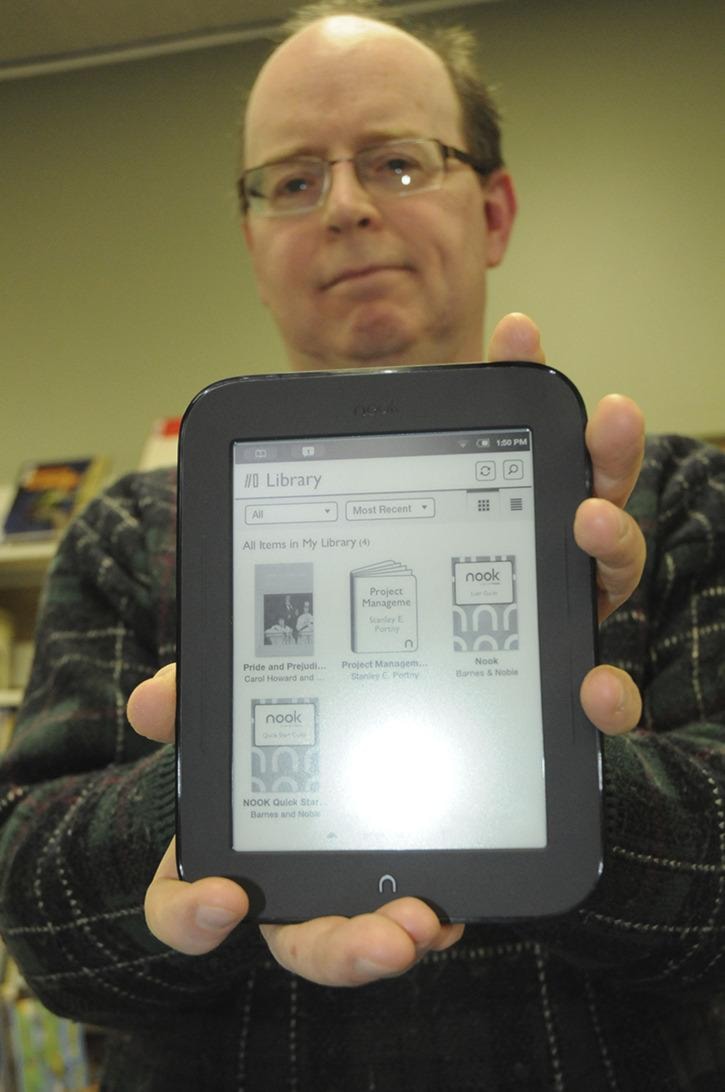How a future library will look is anyone’s guess.
But in this digital age, a library might become less about lending a book and more about transmitting text through less traditional sources.
The Trail and District Public Library reports an exponential increase of tech-savvy users in the last few years, aided by the addition of 12 public access computers, along with the circulation of electronic materials increasing by 63 per cent.
As local library users become more familiar with digitized information, the modern way to access materials through e-readers could mean books, CDs and DVDs become an antiquated resource for future readers.
The current 5,000-square-foot Trail facility is packed with countless tactile resources, so in response to not just a lack of space, but to keep up with the times, the library has added 10 e-readers to its stock of portable devices, and tens of thousands of books to its electronic library.
The new e-readers hit community circulation in March, once target groups, including children ages 9-12 and seniors, are familiarized with the product through after school programs and library outreach.
“We were interested in doing this for a while,” said Belinda Wilkinson, Trail’s library director. “Over three years we have worked to transform the library,” she explained, “And this really is an extension to our home library services and focuses on programming related to families.”
In addition to almost 30,000 e-books available, the virtual world of over 5,000 magazines, called Zinio, will be available for download beginning March 1, giving users access to browse or read digital periodicals offline.
If card registrations are any indication the library is headed in the right direction, Wilkinson can back up the library’s increased digital access, because in 2013, there were 1,976 new cardholders, compared to 368 the year previous, and 412 in 2011.
“New members are a remarkable indication we are doing something right,” she said.
Factors Wilkinson attributes to the explosion of users, include access to digital mediums, increased programs, minor “welcoming” renovations, and a happy and helpful staff.
“Our focus is to build relationships and partnerships in the community so we can continue to expand the services that the community wants us to offer,” she added.
An e-book reader, also called an e-reader, is a portable electronic device that is designed primarily for the purpose of reading digital e-books.
Some of the advantages for those who are shut in, have limited space or reside in a care facility, are lightness and comfort of the e-reader, explained Wilkinson.
“Especially if there are physical constraints that made holding or navigating a physical book impossible or uncomfortable.”
The library’s e-readers are friendly to users with some visual impairment because the ability to adjust text size and font, could phase out the need to order large print textbooks.
“For older people the scalable font size and the (e-reader) ability to remember the last page read is helpful,” she continued. “Reading in bed, it is helpful to hold it close enough to read and change the pages by clicking a button or swiping the screen.”
The library is requesting a $471,000 budget from the city this year, with funds being allocated to additional senior technology education programs, and expanding youth and early childhood projects including the introduction of e-readers.
